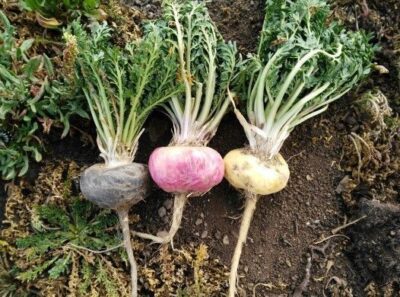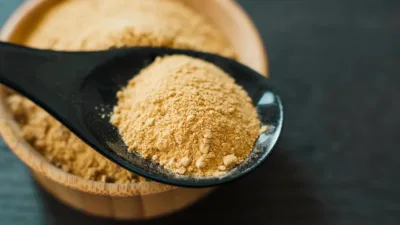
This month’s featured bulk herb of the month is maca! Sometimes called “Peruvian ginseng,” the ground root of this plant (Lepidium meyenii) has a long history of traditional use as a panacea (a remedy for all ailments).
Botanical Description
Maca is a root vegetable in the same family as turnips, radishes, broccoli, and kale (Brassicacea). It’s the only cruciferous plant native to the Peruvian Andes. It survives in harsh conditions between 11,000 and 15,000 feet where few other crops will, making it a staple crop for the Quechua. It has the small off-white flowers typical of brassicas and a root that looks like a radish but can vary in color from red, to yellow, to black. Many Peruvians regard the sweet, spicy root as a delicacy; some prefer the taste of the yellow root, considering it sweeter. The raw vegetable is believed to be harmful, so in Peru, maca is consumed after being dried, soaked, and cooked, roasted, or in the form of the fermented drink “maca chicha.”
Commercial and scientific interest in maca took off in North America, Europe, and Japan in the 1990s, leading to more widespread cultivation of the plant in Peru, Bolivia, and Argentina. The Inca were thought to be the first people to cultivate this plant, 2,000 years ago. They considered it a sacred food from the gods and a highly valuable commodity. Today, it’s still traded for other staples such as rice between communities living at lower elevations.

Health Benefits
Maca’s impressive list of potential health benefits includes its adaptogenic properties and potential to maintain healthy energy levels and endurance, improve sexual function and libido, reduce menopausal symptoms, and regulate mood and hormonal balance. As an adaptogenic herb, maca can help the body manage environmental stresses and increase mental stamina. It is believed to improve fertility and libido in both men and women. Maca is also a good source of antioxidants and essential amino acids including aspartic acid and glutamic acid, which are essential for the functioning of the nervous system.
How to Use Maca Root Powder
You can find powdered maca root in our bulk herbs department.
The powder easily mixes into juice, coconut water, hot beverages, smoothies, yogurt, pudding, cereals, and even ice cream. In its native region, the root is used as a typical grain flour to make cookies, cakes, flan, syrups, beer, liquor, and a porridge called mazzamora. Maca’s nutty, earthy, malty flavor and sweet caramel or butterscotch-like aroma makes it an ideal ingredient for smoothies. It blends well with sweet-tasting herbs and spices and makes a delicious complement to cacao.
As an herbal supplement, maca root powder can also be encapsulated or tinctured.
